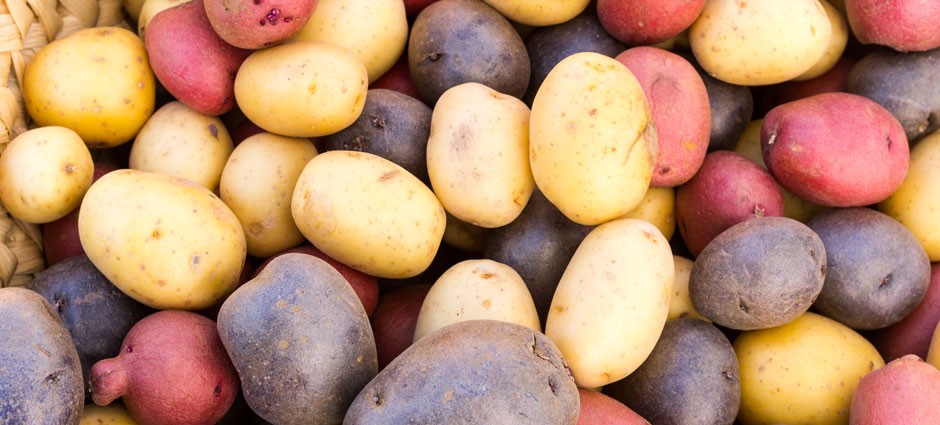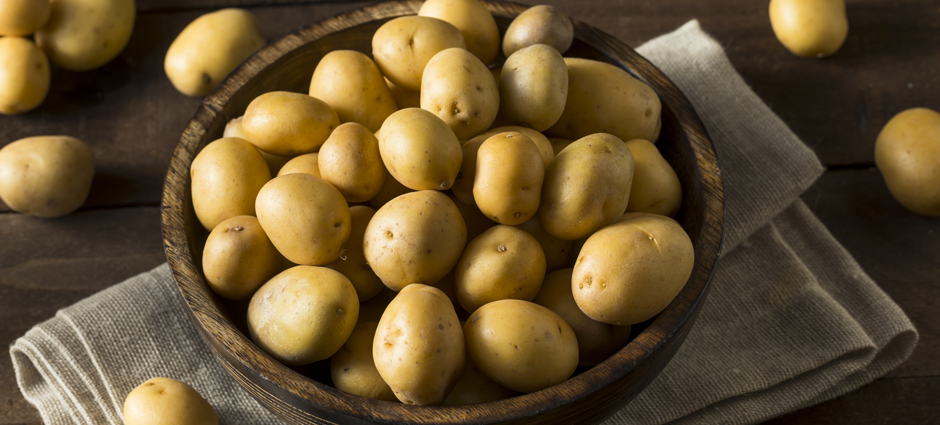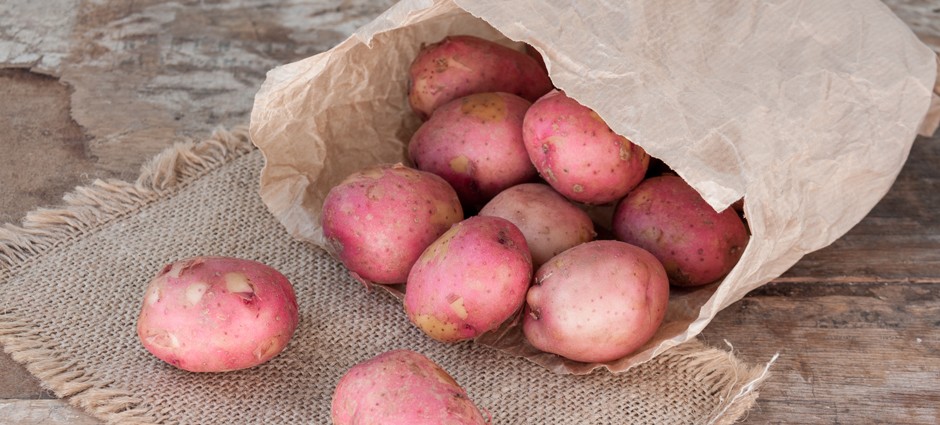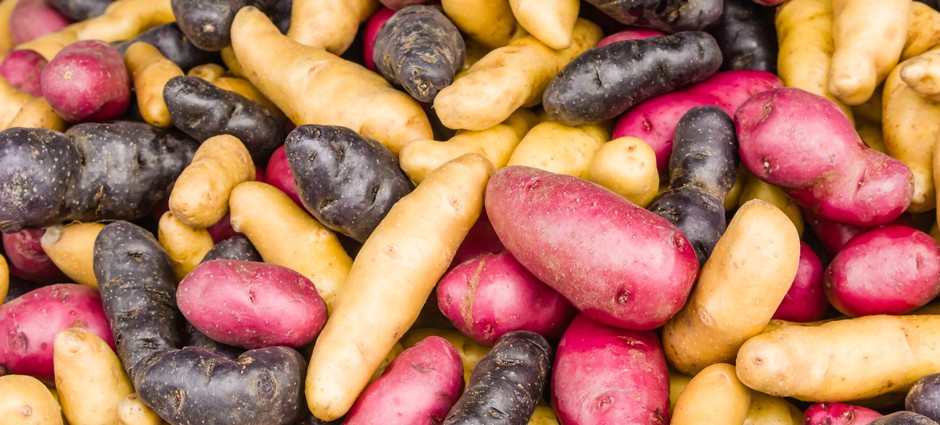A common way to classify potatoes is by their texture: waxy or floury (also called starchy). The differentiation is typically based on the moisture content of the potato flesh and how it reacts to various cooking techniques.
Waxy potatoes with their firm, moist flesh and low starch content maintain their shape after cooking, which makes them the best choice for casseroles, potato salads, and roasting. Floury varieties are lower in moisture, have a fluffy consistency, and are perfect for mashing, baking, and frying.
Another method for making sense of all those spuds is to categorize them by type. Potatoes fall into one of seven categories: russet, yellow, white, red, purple (or blue), fingerling, or petite potatoes.
Russet Potatoes (Floury)
If one potato had to be chosen as the “classic,” it would be the russet. With an oval-like shape and white flesh use this family favorite is great for mashed and baked potatoes and French fries.
Types: Burbank, Centennial, Goldrush
Yellow Potatoes (Waxy)
The vibrant yellow-gold flesh [announces] what the palate can expect: creamy with a buttery flavor. Preferred by chefs and health-conscious home cooks looking for flavor without adding calories.
Types: Bintje, Santina, Yukon Gold
White Potatoes (All-Purpose)
These small to medium white-fleshed tubers maintain their shape after cooking (from the waxy component) yet are also great for frying, baking, and mashing (thanks to their floury side). Thinner than most, the skin of white potatoes does not require peeling which is a great time-saver in the kitchen.
Types: Cobbler, Kennebec, White Rose
Red Potatoes (Waxy)
Named for their colorful red skin, the moist white flesh of a red potato is an excellent choice for soups and stews. Keep the bright, thin skin on to add color and healthy soluble fiber to your dishes.
Types: Chieftain, Pontiac, Ruby
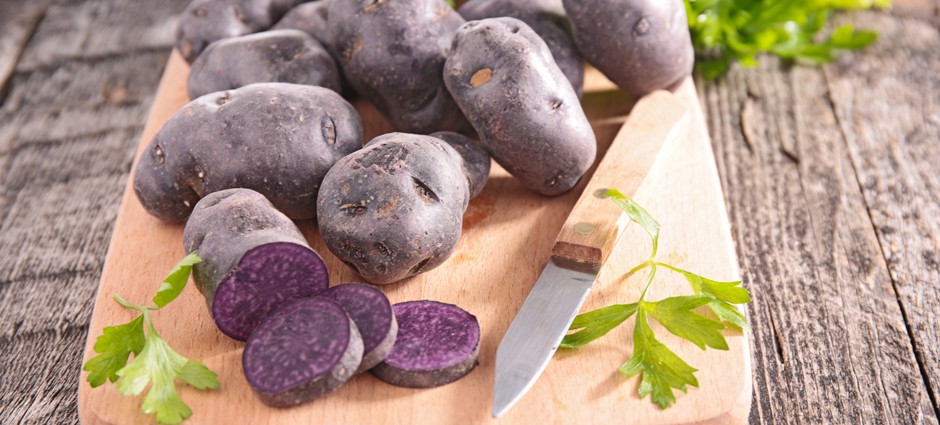
Anthocyanin is a pigment that creates the purple color in these potatoes; it’s also a powerful antioxidant.
Purple/Blue Potatoes (Waxy or Floury)
Some purple-blues like Purple Peruvian have that russet-type texture, but many varieties have moist, firm flesh. All these vibrantly skinned potatoes offer a rich nutty, earthy flavor. When mashed they take on a lavender-blue hue, but retain the deep purple color when microwaved and roasted.
Types: Adirondack Blue, All Blue, Purple Majesty
Fingerling Potatoes (Waxy)
The versatility of these tiny, thin, finger-shaped spuds makes them a favorite among top chefs. Their unique look adds a visual artistry to any dinner plate.
Petite Potatoes (Floury and Waxy)
Don’t let the size fool you. These bite-sized potatoes, which mimic the taste of their larger relatives, are more concentrated and pack a powerful flavor punch.
Go Bananas for . . . Potatoes?
The next time you grab your sack of potatoes check out the nutrition label. But, just in case you’re in a hurry to start concocting your next potato masterpiece, we’ve broken down the awesome health benefits below.
- Vitamin C – 27mg* (30% DV) An Excellent Source
- Vitamin B6 – 0.2 mg (10% DV) A good source
- Potassium – 620mg (15% DV) – Yes! More potassium than a banana!
- Fat – nope
- Sodium – none
- Cholesterol – nada
- Calories – only 110 per serving
*based on one medium-sized (5.2 oz) skin-on potato

